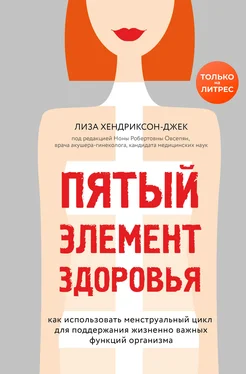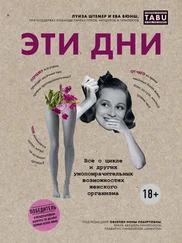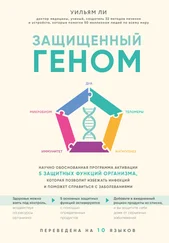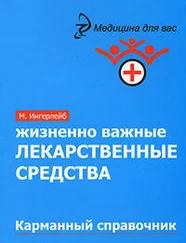22. Livingstone, Mark, and Ian S. Fraser. “Mechanisms of abnormal uterine bleeding.” Human Reproduction Update 8, no. 1 (2002): 62.
23. Vigil, Pilar, Leonard F. Blackwell, and Manuel E. Cortés. “The importance of fertility awareness in the assessment of a woman’s health a review.” The Linacre Quarterly 79, no. 4 (2012): 426–450; Krassas, G.E., N. Pontikides, T.H. Kaltsas, P.H. Papadopoulou, J. Paunkovic, N. Paunkovic, and L.H. Duntas. “Disturbances of menstruation in hypothyroidism.” Clinical Endocrinology 50, no. 5 (1999): 655–659.
24. Livingstone, Mark, and Ian S. Fraser. “Mechanisms of abnormal uterine bleeding.” Human Reproduction Update 8, no. 1 (2002): 63.
25. The Centre for Menstrual Cycle and Ovulation Research. “Very Heavy Menstrual Flow.” Accessed January 8, 2017. www.cemcor.ubc.ca/resources/very-heavy-menstrual-flow; Livingstone, Mark, and Ian S. Fraser. “Mechanisms of abnormal uterine bleeding”. Human Reproduction Update 8, no. 1 (2002): 60.
26. Cole, Susan K., W.Z. Billewicz, and A.M. Thomson. “Sources of variation in menstrual blood loss”. BJOG: An International Journal of Obstetrics and Gynaecology 78, no. 10 (1971): 933–939.
27. Rosenthal, M. Sara. (2001). Managing PMS Naturally: A Sourcebook of Natural Solutions. Toronto: Prentice Hall Canada.
28. Dasharathy, Sonya S., Sunni L. Mumford, Anna Z. Pollack, Neil J. Perkins, Donald R. Mattison, Jean Wactawski-Wende, and Enrique F. Schisterman. “Menstrual bleeding patterns among regularly menstruating women.” American Journal of Epidemiology 175, no. 6 (2012): 536–545.
29. Там же, 538.
30. Jabbour, Henry N., Kurt J. Sales, Rob D. Catalano, and Jane E. Norman. “Inflammatory pathways in female reproductive health and disease.” Reproduction 138, no. 6 (2009): 903–919.
31. Там же.
32. Там же, 907–909.
33. Hadfield, Ruth, Helen Mardon, David Barlow, and Stephen Kennedy. “Delay in the diagnosis of endometriosis: a survey of women from the USA and the UK.” Human Reproduction 11, no. 4 (1996): 878–880.
34. Там же.
35. Hendrickson-Jack, Lisa. “[On-Air Client Session] FFP 220 | Managing Intense Period Pain | Maria & Lisa.” Fertility Friday Podcast. Podcast Audio, September 7, 2018. fertilityfriday.com/220
36. Moradi, Maryam, Melissa Parker, Anne Sneddon, Violeta Lopez, and David Ellwood. “Impact of endometriosis on women’s lives: a qualitative study.” BMC Women’s Health 1, no. 14 (2014): 1–12.
37. Wu, Meng-Hsing, Yutaka Shoji, Pei-Chin Chuang, and Shaw-Jenq Tsai. “Endometriosis: disease pathophysiology and the role of prostaglandins.” Expert Reviews in Molecular Medicine 9, no. 2 (2007): 2.
38. García, Celso-Ramón, and Sami S. David. “Pelvic endometriosis: infertility and pelvic pain.” American Journal of Obstetrics and Gynecology 129, no. 7 (1977): 740–744; Farquhar, Cynthia. “Endometriosis.” The BMJ 334 (2007): 249–253.
1. Odeblad, Erik. “The discovery of different types of cervical mucus and the Billings Ovulation Method.” Bulletin of the Natural Family Planning Council of Victoria 21, no. 3 (1994): 4; Klaus, Hanna. “Natural Family Planning – Is it Scientific? Is it Effective?” Newman Lecture Series 1 (2000): 6.
2. Odeblad, Erik. “The discovery of different types of cervical mucus and the Billings Ovulation Method.” Bulletin of the Natural Family Planning Council of Victoria 21, no. 3 (1994): 3–31; Hilgers, Thomas W. (2004). The Medical & Surgical Practice of NaPro Technology. Omaha, NE: Pope Paul VI Institute Press, 203–205; Matus, Geraldine (Ed.). “Statistical Parameters of the Menstrual Cycle.” Justisse HRHP Training Program. Justisse College. Accessed January 23, 2017. www.justisse.ca/index.php/college/courseware/page/1074.
3. Odeblad, Erik. “The discovery of different types of cervical mucus and the Billings Ovulation Method.” Bulletin of the Natural Family Planning Council of Victoria 21, no. 3 (1994): 2; Human Embryology Embryogenesis. “The path of the sperm cells to the oocyte – capacitation.” Accessed January 23, 2017. www.embryology.ch/anglais/dbefruchtung/weg02.html
4. Moghissi, Kamran S. “The function of the cervix in fertility.” Fertility and Sterility 23, no. 4 (1972): 295–306; Klaus, Hanna. “Natural Family Planning – Is it Scientific? Is it Effective?” Newman Lecture Series 1 (2000): 4; Viergiver, Ellenmae, and W.T. Pommerenke. “Measurement of the cyclic variations in the quantity of cervical mucus and its correlation with basal temperature.” American Journal of Obstetrics and Gynecology 48, no. 3 (1944): 321–328.
5. Pommerenke, W.T. “Cyclic changes in the physical and chemical properties of cervical mucus.” American Journal of Obstetrics and Gynecology 52, no. 6 (1946): 1023–1031.
6. Hilgers, Thomas W. (2004). The Medical & Surgical Practice of NaPro Technology. Omaha, NE: Pope Paul VI Institute Press, 185–186.
7. Ravel, Jacques, Pawel Gajer, Zaid Abdo, G. Maria Schneider, Sara S.K. Koenig, Stacey L. McCulle, Shara Karlebach. “Vaginal microbiome of reproductive-age women.” Proceedings of the National Academy of Sciences 108, no. Supplement 1 (2011): 4680–4687.
8. Miller, Elizabeth A., DeAnna E. Beasley, Robert R. Dunn, and Elizabeth A. Archie. “Lactobacilli dominance and vaginal pH: why is the human vaginal microbiome unique?” Frontiers in Microbiology 7 (2016): 1–13.
9. Zhou, Xia, Stephen J. Bent, Maria G. Schneider, Catherine C. Davis, Mohammed R. Islam, and Larry J. Forney. “Characterization of vaginal microbial communities in adult healthy women using cultivation-independent methods.” Microbiology 150, no. 8 (2004): 2565–2573; Donders, Gilbert G.G., Eugene Bosmans, Alfons Dekeersmaeckerb, Annie Vereecken, Ben Van Bulck, and Bernard Spitz. “Pathogenesis of abnormal vaginal bacterial flora.” American Journal of Obstetrics and Gynecology 182, no. 4 (2000): 872–878; Linhares, Iara M., Paul R. Summers, Bryan Larsen, Paulo C. Giraldo, and Steven S. Witkin. “Contemporary perspectives on vaginal ph and lactobacilli.” American Journal of Obstetrics and Gynecology 204, no. 2 (2011): 120e1–120e5.
10. O’Hanlon, Deirdre E., Thomas R. Moench, and Richard A. Cone. “Vaginal pH and microbicidal lactic acid when lactobacilli dominate the microbiota.” PLOS One 8, no. 11 (2013): e80074; Rakoff, A.E., Louis G. Feo, and Leopold Goldstein. “The biologic characteristics of the normal vagina.” American Journal of Obstetrics and Gynecology 47, no. 4 (1944): 467–494; Ravel, Jacques, Pawel Gajer, Zaid Abdo, G. Maria Schneider, Sara S.K. Koenig, Stacey L. McCulle, and Shara Karlebach. “Vaginal microbiome of reproductive-age women.” Proceedings of the National Academy of Sciences 108, no. Supplement 1 (2011): 4680–4687; Miller, Elizabeth A., DeAnna E. Beasley, Robert R. Dunn, and Elizabeth A. Archie. “Lactobacilli dominance and vaginal pH: why is the human vaginal microbiome unique?” Frontiers in Microbiology 7 (2016): 1–13.
11. Haugen, T.B., and T. Grotmol. “pH of human semen.” International Journal of Andrology 21, no. 2 (1998): 105–108; Eggert-Kruse, Waltraud, Andreas Köhler, Gerhard Rohr, and Benno Runnebaum. “The pH as an important determinant of sperm-mucus interaction.” Fertility and Sterility 59, no. 3 (1993): 617–628; Stein, Irving F., and Melvin R. Cohen. “Sperm survival at estimated ovulation time: prognostic significance.” Fertility and Sterility 1, no. 2 (1950): 169–175; Ahlgren, Mats. “Sperm transport to and survival in the human fallopian tube.” Gynecologic and Obstetric Investigation 6, no. 3–4 (1975): 206–214.
12. Lambert, Hovey, James W. Overstreet, Patricio Morales, Frederick W. Hanson, and Ryuzo Yanagimachi. “Sperm capacitation in the human female reproductive tract.” Fertility and Sterility 43, no. 2 (1985): 325–327.
Читать дальше
Конец ознакомительного отрывка
Купить книгу












